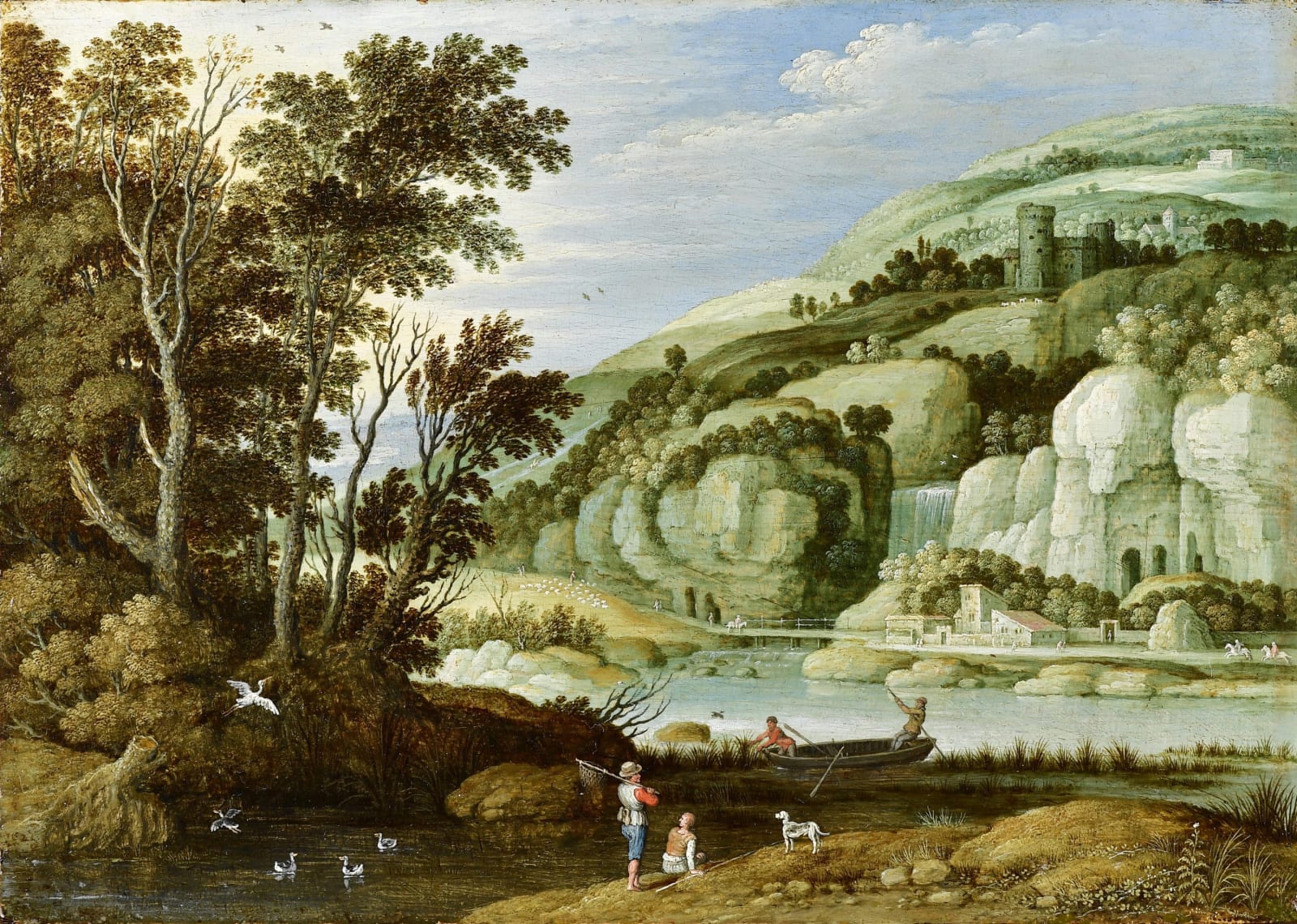Marten Ryckaert (Antwerp 1587 - 1631)
Marten Ryckaert was born in Antwerp in 1587. He was the son of the painter David Ryckaert I. As the result of a birth defect, he only had one arm, although this did not prevent him from becoming a successful painter. He was first taught by his father; later he was a pupil of Tobias Verhaecht, who was also Rubens’ first teacher. In 1607 Ryckaert became a member of the guild of St Luke – he was registered as “the one-armed painter”. He travelled to Italy between 1607 and 1610. After his return Ryckaert, like his contemporaries Jan Brueghel, Hendrick van Balen and Sebastiaen Vrancx, joined De Violieren, the chamber of rhetoric. Ryckaert was a close friend of Anthony van Dyck, who painted his portrait, which would remain in Ryckaert’s quite extensive art collection until his death; today, it is in the Prado (Madrid). It was engraved and included in van Dyck’s Iconographia.
Ryckaert mostly painted small imaginary landscapes on panel or copper in a style reminiscent of Joos de Momper – especially in the color treatment – and Jan I Brueghel (in the buildup of his compositions). The present signed and dated work is a prime example of his mature style. Trees, people, architecture and animals are depicted with a great eye for detail, while not necessarily requiring more than a few deftly and quickly applied brushstrokes. It is here that Ryckaert is at his very best, evoking a very pleasing imaginary world in which the viewer would happily participate.
Interestingly, the Louvre has a similar composition, signed by Paul Bril. While it is well known that Ryckaert sometimes copied – or was inspired by – works by Bril, in this case Bril’s work is dated 1624 – indicating it was painted two years after the present work, which is dated 1622. Whether this means that the artists mutually inspired each other, or that they both based their composition on another – now-lost – work remains the subject of debate. Encouragingly, researchers are presently trying to fill in these gaps in our knownledge, as the work and life of Marten Ryckaert are finally receiving the attention they have long deserved, with renewed research and forthcoming publications.
Provenance
Private collection, France.
- X
- Tumblr

